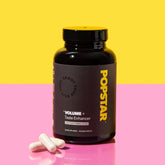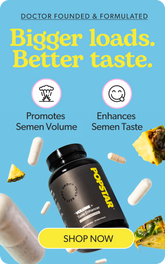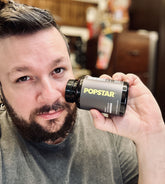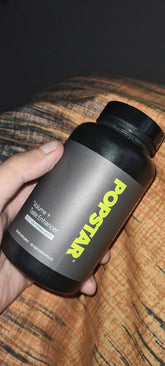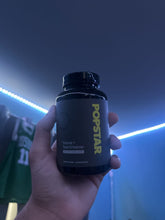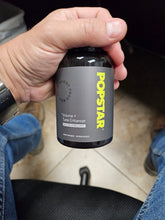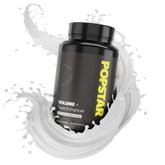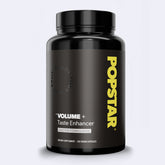Often used as a playful term to describe the state of female sexual arousal, “Lady Boner” speaks directly to the physical and emotional response that women experience when they become sexually excited. While this phrase began as slang, growing cultural awareness of female sexuality and pleasure has helped transform “Lady Boner” into an approachable way to discuss the physiological processes and emotional shifts that occur during arousal. In this article, we will explore what a Lady Boner means in a medical sense, the science behind sexual response, the emotional components that drive desire, and frequently asked questions surrounding this intriguing topic.
Table of Contents
- Definition and Meaning
- The Physiology of Female Arousal
- Why Lady Boners Happen
- Emotional and Psychological Desire
- Factors Influencing Arousal
- Tips for Improving Female Sexual Arousal
- Frequently Asked Questions
- References
Definition and Meaning
“Lady Boner” is a colloquial term referencing a woman’s sexual arousal, most notably marked by physiological changes such as increased blood flow to the genitals, heightened sensitivity, and a psychological state of excitement. Although the term might sound informal, it touches upon real scientific processes that parallel the male erection in principle, albeit with key differences. Women experience blood engorgement in the clitoris and surrounding tissues—often considered the physiological counterpart of the “male erection.”
This phenomenon goes beyond the physical. Emotions, hormones, neurotransmitters, and mental engagement play equally crucial roles. The “Lady Boner,” much like any sexual arousal state, is thus a holistic experience influenced by complex biological pathways and personal context. From an anatomical standpoint, the clitoris contains erectile tissue similar to that found in the penis, and this tissue swells and becomes more sensitive during sexual excitement. This swelling and heightened sensitivity, combined with psychological factors, is what comprises the Lady Boner experience.
In popular culture, this term has grown over time to celebrate and normalize female desire. By understanding its underlying mechanisms, individuals and partners can appreciate the richness of female sexual response. It is essential to note that each woman’s reaction can vary significantly, reflecting her unique anatomy and emotional state. Similarly, the intensity of arousal and the triggers appropriate for achieving it can differ widely, highlighting how personalized the journey to sexual excitement truly is.
The Physiology of Female Arousal
The physiological process behind a Lady Boner is as intricate as it is fascinating. Arousal starts with a signal from the brain, influenced by stimuli such as sensual touch, erotic thoughts, visual prompts, or emotional closeness. These stimuli activate the parasympathetic nervous system, leading to a cascade of events:
- Increased Blood Flow: During arousal, blood vessels in the pelvis dilate, directing more blood to the clitoris and surrounding tissues.
- Clitoral Swelling: The clitoris can nearly double in size when engorged, intensifying sensitivity and pleasure.
- Vaginal Lubrication: Bartholin’s glands and other factors produce fluid, allowing for smoother intercourse or sexual exploration.
- Elevated Heart Rate: As the body gears up for possible sexual activity, the heart rate increases for better oxygen circulation.
In parallel, hormonal fluctuations—particularly in estrogen and testosterone—fuel sexual desire and enhance vaginal engorgement. Melanocortins, dopamine, and oxytocin also play pivotal roles. Dopamine fosters the reward sensations associated with intimacy, while oxytocin strengthens emotional bonding. When these hormones, chemicals, and nerves work seamlessly, they create the hallmark sensations of increased warmth, tingling, and heightened anticipation that many associate with a Lady Boner.
A deeper understanding of these mechanics can be beneficial not only for women, but also for their partners. Recognizing that female sexual arousal is a gradual and multi-layered process can help shape patient, mindful approaches to intimacy, ensuring that the experience is pleasurable and meaningful for everyone involved.
Why Lady Boners Happen
Lady Boners can be explained by examining both biology and environment. Biologically, clitoral tissues—packed with nerve endings—are highly responsive to sexual stimulation. This makes them swell and become more sensitive during arousal. Meanwhile, mental and emotional triggers also play significant roles. Here are some additional reasons behind Lady Boners:
- Visual and Sensory Triggers: Many women respond to visual cues—such as erotic images—or physical sensations—such as gentle touch—to spark arousal. What appears on the surface as sudden excitement is often a response programmed by the brain’s reward pathway.
- Psychological Arousal: Fantasies, emotional security, and connection can create psychological readiness that manifests physically, resulting in increased genital blood flow and moisture.
- Evolutionary Perspective: Sex drives reproduction and species continuity. Engorgement of the clitoris ensures pleasurable sensations reinforce sexual behaviors crucial for reproduction. While modern life complicates the original evolutionary intent, the fundamental biological impetus remains.
- Hormonal Shifts: Fluctuations in estrogen and testosterone levels throughout the menstrual cycle can influence sexual desire. Right before and during ovulation, for instance, many women report higher libido and more frequent Lady Boners.
Unlike male erections, which can be visually obvious, Lady Boners often involve subtler outward signs. However, they are no less valid or important. Women may feel warmth and a buildup of sexual tension in their pelvic region, heightened by mental readiness and emotional compatibility with a partner or pleasurable solitude. All of these elements underscore that a Lady Boner is a holistic experience, interwoven with an individual’s unique physical, mental, and emotional makeup.
Emotional and Psychological Desire
Beyond the structural changes in the genital region, emotional and psychological factors heavily influence a Lady Boner. While sexual desire is sometimes reduced to physical sensation, the emotional context within which someone experiences attraction and intimacy can amplify or dampen arousal. This extends beyond romantic partnerships; confidence, body image, mental health, and previous experiences all converge to shape the likelihood and intensity of a Lady Boner.
Stress, for instance, can suppress physiological responses, as the body prioritizes the fight-or-flight response over sexual exploration. In these scenarios, a release of cortisol can override the parasympathetic drive necessary for vasodilation and relaxation. Similarly, experiences of trauma or negative body image may create inhibitions that hamper a woman’s capacity to sustain or even initiate arousal. On the contrary, emotional support, intimacy, and mutual respect can significantly enhance the body’s willingness to respond, leading to robust Lady Boners that reflect both comfort and excitement.
Another key aspect is mindset. Self-awareness and mindfulness about one’s responses and triggers can improve the overall experience. Feeling mentally prepared and supported fosters a positive feedback loop: emotional ease promotes physical arousal, which in turn fosters greater emotional satisfaction. This intricate dance underlines that while the Lady Boner has a physical dimension, it cannot be separated from the emotional tapestry that completes the experience.
Factors Influencing Arousal
When considering the range and variability of women’s sexual experiences, it becomes clear that countless internal and external factors contribute to Lady Boners. Some key influences include:
- Hormones: Estrogen and testosterone drive libido, while imbalances can lead to decreased arousal.
- Age and Life Stage: Hormonal changes during pregnancy, postpartum, menopause, or perimenopause can influence both psychological desire and physical responsiveness.
- Medication: Certain medications, such as antidepressants, oral contraceptives, or blood pressure drugs, can impact libido and sexual function.
- Lifestyle Factors: Exercise, diet, and overall well-being affect energy levels and circulation, which in turn influence sexual receptiveness.
- Relationship Dynamics: Communication, trust, and emotional security foster healthy intimacy. A woman who feels valued and understood is more likely to experience deeper arousal.
- Psychological Well-being: Stress, anxiety, depression, and unresolved trauma can dampen libido and contribute to challenges with arousal.
These nuances highlight how each Lady Boner is specific to the moment, partner dynamic, and personal state. Approaches to enhancing female arousal are often multifaceted—requiring medical, psychological, and relational considerations. From therapy to improved communication, addressing underlying stressors or potential hormone imbalances can help. In essence, the more holistic the approach, the higher the likelihood that arousal is consistent and richly experienced.
Tips for Improving Female Sexual Arousal
Many women seek ways to enhance their Lady Boners, whether for personal satisfaction or relationship enrichment. While every individual will have a unique regimen that works for them, general guidelines can be beneficial:
- Communication: Honest dialogue with one’s partner fosters understanding of personal preferences, comfort zones, and fantasies. Good communication often lessens anxiety and boosts confidence, setting a solid foundation for healthy arousal.
- Foreplay and Extended Touch: Slowing down intimate moments allows the body to build up excitement. Gentle massages, deep kissing, or oral stimulation enable the pelvic region time to respond fully, facilitating stronger Lady Boners.
- Mindfulness and Stress Reduction: Practicing relaxation techniques—such as yoga, meditation, or deep breathing—can counteract daily stressors inhibiting sexual responsiveness.
- Physical Fitness and Diet: Consistent exercise can improve circulation, hormonal balance, and energy levels. Including nutrient-rich foods (like leafy greens, fruits, and healthy fats) supports overall well-being, which can boost libido.
- Consider Lubricants: Adequate lubrication reduces discomfort and allows mental focus to remain on pleasure. Water-based or silicone-based lubricants can enhance sensations and help maintain momentum.
- Explore Different Stimuli: Some women enjoy erotic literature, gentle music, or certain scents to ease into a state of relaxation and desire. Experimentation encourages discovery of what triggers the most significant Lady Boners.
- Professional Guidance: If medical or psychological issues exist, seeking help from a healthcare provider, therapist, or sexologist can pinpoint potential barriers to arousal and recommend tailored solutions.
Implementing these practices requires patience and self-compassion. By viewing sexual response as an ongoing journey rather than a checklist, women can adopt healthy habits that cultivate deeper, more satisfying Lady Boners over time.
Frequently Asked Questions
What is a Lady Boner?
A Lady Boner refers to the engorgement of female genital tissues, particularly the clitoris, in response to sexual excitement. It parallels a male erection in that the clitoral tissue swells with blood, heightening sensitivity and pleasure.
Is a Lady Boner the same thing as a male erection?
While the underlying mechanism shares similarities—both involve blood flow to erectile tissue—women often experience more nuanced arousal. Emotional, mental, and contextual factors also heavily influence a woman’s receptivity and intensity of sexual response.
What triggers a Lady Boner?
Triggers can vary widely, including visual or sensory stimuli, emotional connection, foreplay, erotic fantasies, or certain hormonal states. Each woman will have different sexual cues and preferences that prompt arousal.
Do hormones affect female sexual arousal?
Yes. Hormones like estrogen and testosterone play a significant role in libido and sexual responsiveness. Fluctuations in these hormones—as seen during the menstrual cycle, pregnancy, or menopause—can directly impact the frequency and intensity of a Lady Boner.
Can stress impact a Lady Boner?
Absolutely. Stress ramps up cortisol levels, which can inhibit the parasympathetic nervous system necessary for arousal. Mental tension and anxiety make it harder to focus on pleasure, often diminishing physical and emotional responses.
What role do emotions play in a Lady Boner?
Emotions are central to female sexual response. Psychological security, emotional intimacy, and positive relationship dynamics can significantly enhance arousal, while fear, unresolved conflict, or lack of trust may diminish or block the process entirely.
Can medications influence sexual desire?
Yes. Many types of medication—such as antidepressants, birth control pills, and antihypertensives—can reduce libido or alter a woman’s sexual responsiveness. If you notice changes in sexual desire after starting a new medication, discuss this with your healthcare provider.
Is it possible to have multiple Lady Boners during one session?
In many cases, women can experience multiple peaks of arousal within the same sexual encounter. After orgasm, some women can continue stimulation to achieve further sexual response, including enhanced genital engorgement.
How can I improve my ability to experience a Lady Boner?
Focus on relaxation, emotional security, and consistent communication with partners. Incorporating extended foreplay, using lubricants if needed, and maintaining a healthy lifestyle can all help cultivate more powerful waves of arousal.
Should I be concerned if I rarely experience a Lady Boner?
It depends on your personal well-being and overall sexual satisfaction. If lack of arousal causes distress or affects your relationship, consult a healthcare professional or therapist to evaluate potential underlying causes, including hormone imbalances, mental health concerns, or relationship issues.
References
Below are some references and resources for deeper information on female sexual response and arousal:
- Hill CA. “The Association Between Stress and Sexual Responsiveness.” Journal of Sex & Marital Therapy.
- Basson R. “Women’s Sexual Function and Dysfunction: Classification, Evaluation, and Therapeutic Strategies.” Endocrinology & Metabolism Clinics of North America.
- Leiblum SR, Rosen RC. “Principles and Practice of Sex Therapy.”
- Masters WH, Johnson VE. “Human Sexual Response.”
- American Sexual Health Association: ashasexualhealth.org
Understanding and appreciating the nature of Lady Boners can lead to enhanced intimacy, improved communication with partners, and deeper self-awareness. Ultimately, embracing female sexual desire enriches overall well-being—both in men’s health discussions and beyond.
